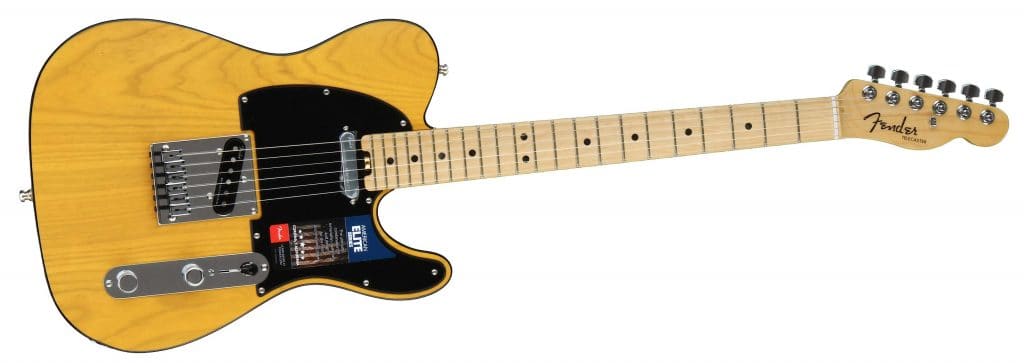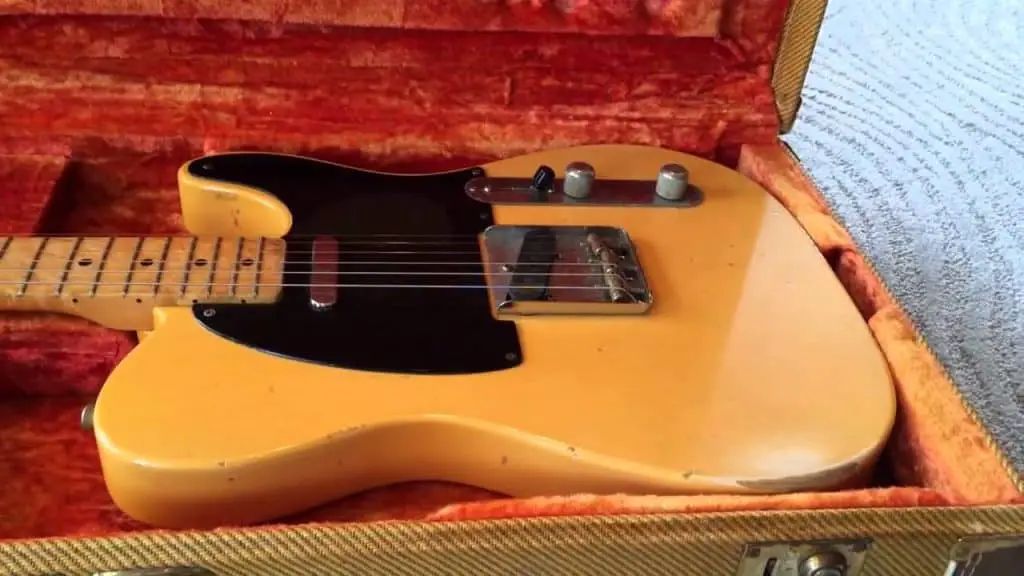“That thing will never sell.”, were Fred Gretsch’s first words upon laying eyes on the Fender Telecaster in 1950. Nearly seventy years later, the first ever solid body guitar is still going strong. From Keith Richards to Johnny Greenwood, this iconic guitar has proved that Leo Fender’s invention was way ahead of its time. Can you imagine that people used to laugh at it and jokingly ask Leo if he was going to paddle a canoe with it?
The first production model (1950) of the Telecaster was the Esquire. The Esquire had the same body shape, bridge and bolt on maple neck as the Telecaster but it only had a bridge pickup and, its biggest flaw was that it didn’t have a truss rod, which made it impossible to add or relieve tension on the neck. Leo realized this and designed an improved version of the Esquire which was named the Fender Broadcaster. The instrument was basically the Telecaster we love and play today but with a different name. So why did Leo decide to change the name? He didn’t. Fred Gretsch from The Gretsch Company asked him to, because his company was already producing a drum set which was called Broadkaster.
To avoid trademark issues Leo decided to sand off the Broadcaster from the logo and start selling the guitars that were already produced. This was the birth of the Nocaster. (It was named this way because the headstock only read Fender.) The name Telecaster came a little bit later and wasn’t Leo Fender’s idea. It was a man who worked for Fender named Don Randall who suggested it, coining the word by merging “television” with “broadcaster”. Little did they know that soon the Telecaster would fall into the lap of renowned country player James Burton and Leo would have his hands full as demand for his “canoe paddle” would skyrocket.

The next step in the evolution of the Telecaster came in 1959 when Fender introduced the Telecaster Custom. This model featured double side binding, a rosewood fret board and an array of custom colors, which was a welcome upgrade from the butterscotch blonde finish.
Then years later the first ever Thinline Telecaster was distributed to shops. This incarnation featured a semi-hollow body, which in turn made it lighter, and had a warmer, deeper sound. In 1972 Fender expanded on the Telecaster Custom and introduced the Deluxe Telecaster.
The Telecaster Custom now featured a humbucker at the neck position and had four control knobs, two volume and two tone. It quickly won the heart of Rolling Stones legend Keith Richards as he had put one together a year earlier. The Deluxe Telecaster bridged the gap between Fender and Gibson because it offered players a two humbucker setup, with four control knobs and a Stratocaster neck.

During the late 70s Fender was losing ground in Asia, most notably Japan, because the Japanese copies were more affordable and could still pack a punch. As a result Fender began reaching out to guitar luthiers in Japan. In 1982 Fender Japan Ltd. began production and delivered a variety of different limited edition Telecasters and finishes that opened a whole new horizon for the company.
The Telecaster has come a long way while still retaining its core intact. It was made before half of the genres that are played on it even existed and there is no doubt that it will serve its purpose in the future, come what may.




